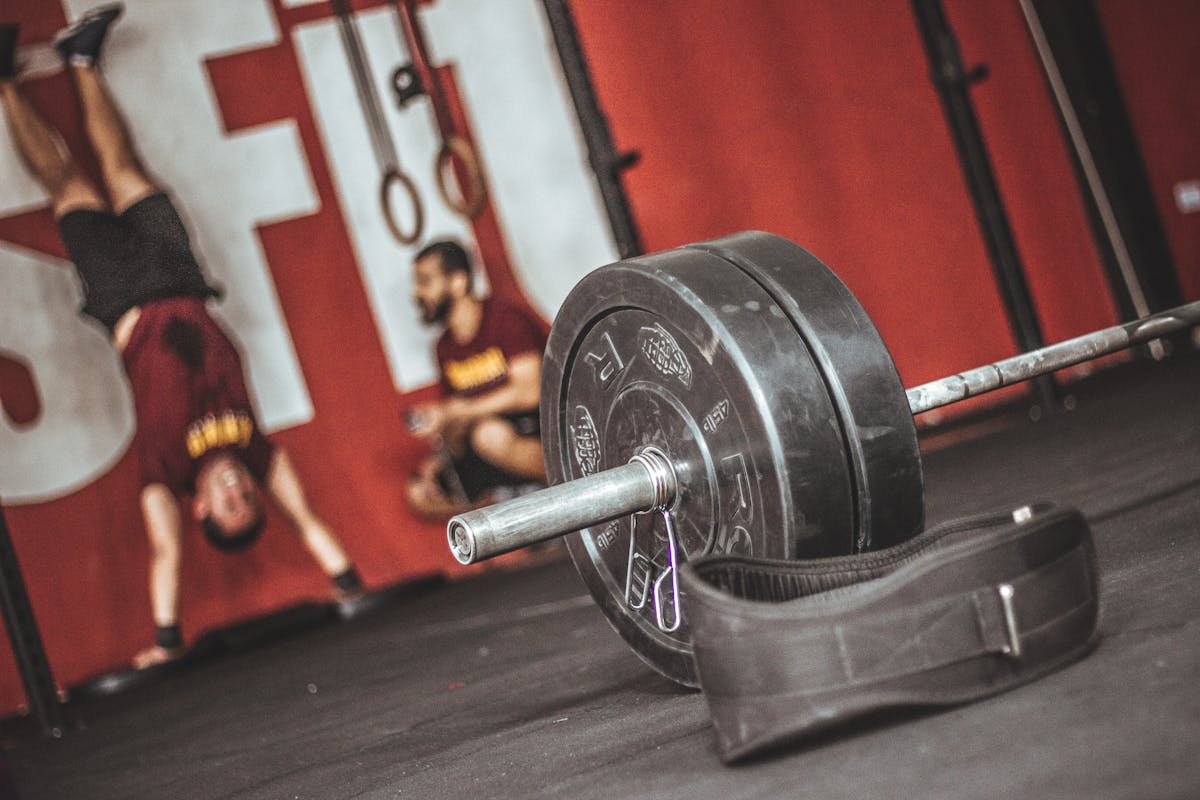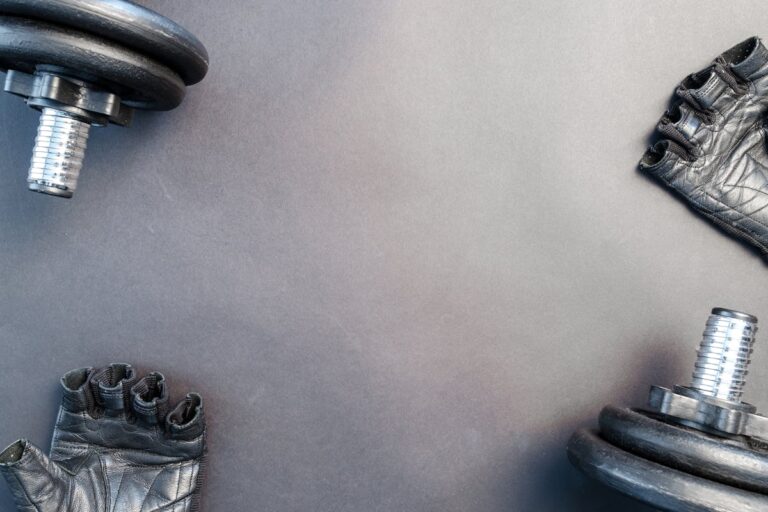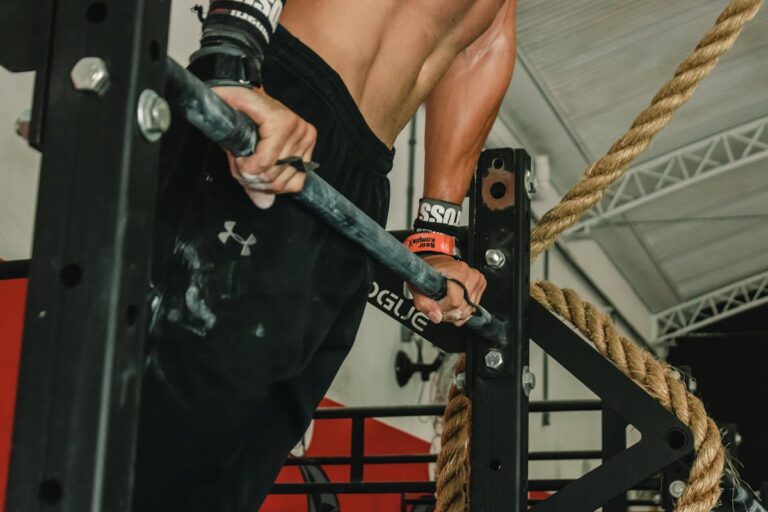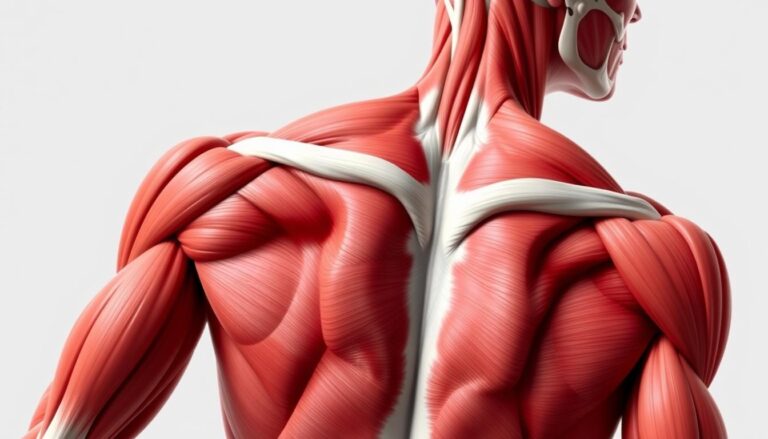Your Ultimate 7-Day Gym Workout Plan for Total Muscle Gain
Your Ultimate 7-Day Gym Workout Plan
Introduction to the 7-Day Full Body Workout Plan
The 7-Day Full Body Workout Plan is meticulously designed to balance muscle gain, endurance, and overall fitness. Each day of the week targets diverse muscle groups, ensuring no part of the body is neglected. The workout plan includes a variety of exercises that encompass strength training, cardio, and flexibility, optimized for both beginners and seasoned athletes.
Table of Contents
Key Components of the Plan Your Ultimate 7-Day Gym Workout Plan
- Strength Training: Core focus on building and defining muscles.
- Cardio: Essential for cardiovascular health and stamina.
- Flexibility: Integrating stretching exercises to prevent injuries and promote muscle recovery.
- Rest and Recovery: Strategically planned rest days for optimal muscle recovery and growth.
Daily Breakdown
- Day 1: Upper Body – Exercises targeting chest, shoulders, triceps.
- Day 2: Lower Body – Focus on quads, calves, glutes.
- Day 3: Cardio and Core – High-intensity interval training and core strengthening exercises.
- Day 4: Back and Biceps – Exercises designed for the back and biceps.
- Day 5: Full-Body Functional Training – Compound exercises integrating full-body movements.
- Day 6: Active Recovery – Light activities such as yoga or brisk walking.
- Day 7: Rest – Complete rest for muscle recovery.
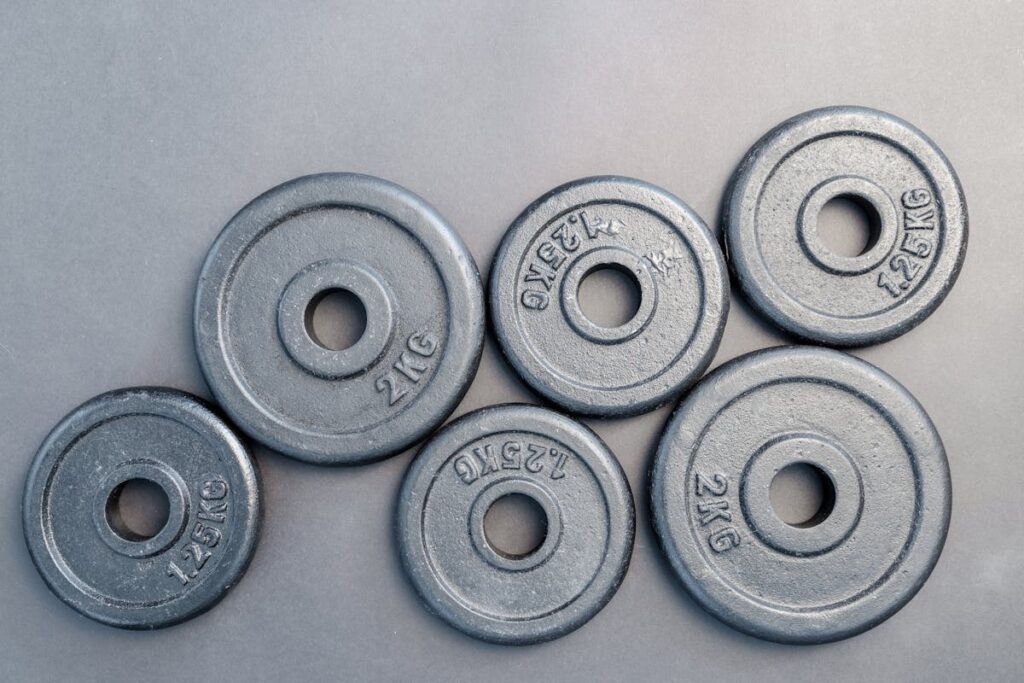
Equipment Needed
- Barbells and Dumbbells: Essential for weighted exercises.
- Resistance Bands: Useful for varied resistance training.
- Treadmill or Running Space: For cardiovascular exercises.
- Mat: Necessary for floor exercises and stretching.
Benefits of the Plan
- Muscle Hypertrophy: Promotes muscle growth through progressive overload.
- Increased Metabolism: Boosts metabolic rate, aiding in fat loss.
- Improved Endurance: Enhances cardiovascular efficiency and stamina.
- Comprehensive Fitness Goals: Combines various training modalities for overall health and fitness.
Tips for Success
- Consistency: Adhering to the plan consistently yields the best results.
- Proper Nutrition: Balanced diet rich in proteins, carbohydrates, and fats.
- Hydration: Essential for muscle function and recovery.
- Sleep: Adequate rest is vital for muscle repair and growth.
This 7-Day Full Body Workout Plan is ideal for individuals aiming for total muscle gain and enhanced physical fitness. The balanced approach ensures a well-rounded workout routine addressing strength, endurance, and flexibility.
Understanding the Basics: Muscle Gain for Beginners
Muscle gain, also known as hypertrophy, involves increasing the size of skeletal muscles through exercise. Beginners should understand several fundamental principles to start this journey effectively.
Key Principles of Muscle Gain
- Progressive Overload: Gradually increasing the weight, frequency, or number of repetitions in workouts challenges muscles and stimulates growth.
- Compound Exercises: Multi-joint movements like squats, deadlifts, and bench presses target multiple muscle groups and are effective for building muscle mass.
- Proper Form: Maintaining correct form minimizes the risk of injury and ensures that the target muscles are properly engaged.
- Rest and Recovery: Muscles grow during rest, not during exercise. Adequate sleep and rest days are essential for recovery.
Nutrition
A balanced diet is crucial for muscle gain. Key dietary components include:
- Protein: Essential for muscle repair and growth. Sources include lean meats, dairy, and plant-based proteins.
- Carbohydrates: Provide the energy needed for intense workouts. Include whole grains, fruits, and vegetables.
- Fats: Support hormone production and overall health. Focus on healthy fats from sources like avocados, nuts, and olive oil.
- Hydration: Proper hydration aids in muscle repair and overall performance. Drink plenty of water throughout the day.
Supplements
While whole foods should be the primary source of nutrients, some supplements can support muscle gain, including:
- Whey Protein: Quick and convenient source of protein.
- Creatine: Enhances strength and muscle mass.
- BCAAs: Help reduce muscle soreness and support growth.
Mental Preparation
Mental resilience is vital for muscle gain. Stay motivated by setting realistic goals and tracking progress. It’s important to remain patient and persistent, as muscle growth is a gradual process.
In summary, understanding these basics will set a solid foundation for effective muscle gain, enabling beginners to maximize their results in the gym. Bloc
Day 1: Upper Body Strength Training
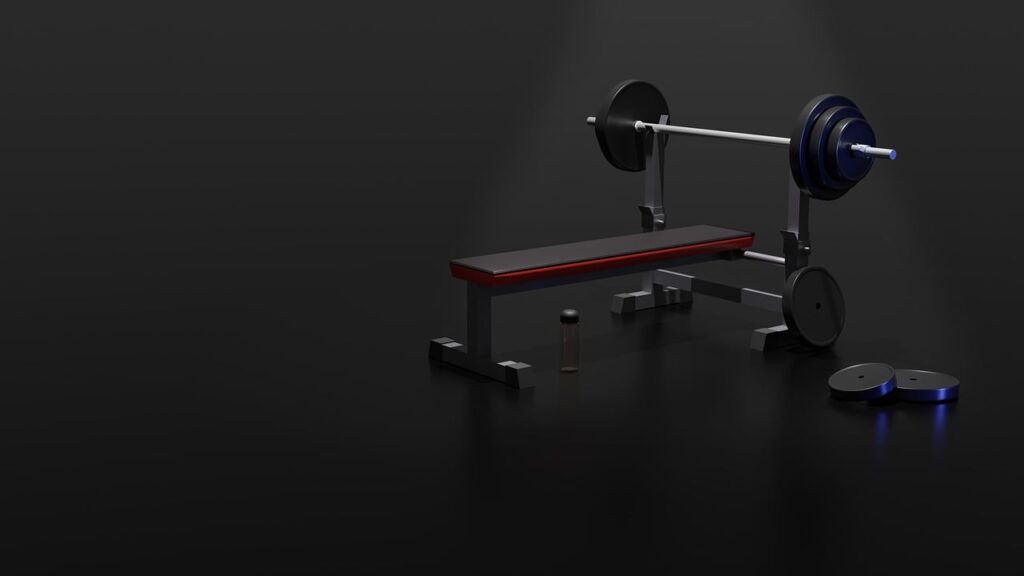
Day 1 targets the upper body to build strength and muscle mass. Focusing on major muscle groups such as the chest, back, shoulders, and arms, this workout utilizes a mix of compound and isolation exercises.
Warm-Up
Begin with a 10-minute full-body warm-up to increase blood flow and prepare muscles. This may include:
- 5 minutes of light cardio (jump rope, jogging)
- 5 minutes of dynamic stretches (arm circles, torso twists)
Workout Routine
Chest
- Bench Press
- Sets: 4
- Reps: 8-12
- Rest: 60-90 seconds between sets
- Incline Dumbbell Press
- Sets: 3
- Reps: 10-15
- Rest: 60-90 seconds between sets
Back
- Pull-Ups
- Sets: 4
- Reps: 6-10
- Rest: 60-90 seconds between sets
- Note: Use weight assistance if needed
- Bent Over Rows
- Sets: 3
- Reps: 8-12
- Rest: 60-90 seconds between sets
Shoulders
- Overhead Press
- Sets: 4
- Reps: 8-12
- Rest: 60-90 seconds between sets
- Lateral Raises
- Sets: 3
- Reps: 10-15
- Rest: 60-90 seconds between sets
Arms
- Bicep Curls
- Sets: 3
- Reps: 10-15
- Rest: 60-90 seconds between sets
- Tricep Dips
- Sets: 3
- Reps: 10-15
- Rest: 60-90 seconds between sets
- Note: Use weight assistance or bench dips if necessary
Cool Down
Finish with a cool down to aid recovery and reduce muscle soreness. Spend 5-10 minutes on:
- Static stretches (chest stretch, arm across chest, shoulder stretches)
- Light cardio (walking, slow cycling)
This carefully crafted routine maximizes upper body strength gains through high volume and moderate intensity. Ensure proper form during exercises to prevent injury and get the most out of each movement.
Day 2: Lower Body Focused Exercises
Day 2 targets the major muscle groups in the lower body, including quads, hamstrings, glutes, and calves. These exercises are essential for building strength and improving overall stability and balance. Utilizing free weights and machines can offer a balanced workout.
Squats
Squats are a staple in any lower body routine. They work the quads, glutes, and hamstrings.
Instructions:
- Stand with feet shoulder-width apart.
- Hold a barbell across your upper back.
- Lower your body by bending your knees and hips.
- Push through your heels to return to the starting position.
Sets/Reps: 4 sets of 8-12 reps
Deadlifts
Deadlifts focus on the hamstrings, glutes, and lower back.
Instructions:
- Stand with feet hip-width apart, barbell over mid-foot.
- Bend at the hips and knees to grip the bar.
- Lift the bar by straightening your back and legs.
- Lower it back to the ground in a controlled manner.
Sets/Reps: 3 sets of 6-10 reps
Lunges
Lunges work the quads, glutes, and hamstrings, offering unilateral leg strength development.
Instructions:
- Stand with feet together, holding dumbbells by your sides.
- Step forward with one leg and lower your body.
- Push through the front heel to return to the starting position.
- Repeat for the other leg.
Sets/Reps: 3 sets of 12 reps per leg
Leg Press
The leg press is excellent for hitting the quads and glutes without overloading the spine.
Instructions:
- Sit on the leg press machine.
- Place feet shoulder-width apart on the platform.
- Push the platform away by extending your legs.
- Slowly return to the starting position by bending your knees.
Sets/Reps: 4 sets of 10-15 reps
Hamstring Curls
Hamstring curls isolate and strengthen the hamstrings.
Instructions:
- Lie face down on the hamstring curl machine.
- Place your ankles under the padded lever.
- Curl your legs up towards your buttocks.
- Slowly lower them back to the starting position.
Sets/Reps: 3 sets of 12-15 reps
Calf Raises
Calf raises target the calves and help improve lower leg strength.
Instructions:
- Stand with feet hip-width apart on the edge of a step.
- Lower your heels down below the step.
- Push through the balls of your feet to raise your heels.
- Slowly return to the starting position.
Sets/Reps: 4 sets of 15-20 reps
Day 3: Rest and Recovery

The third day of the 7-day gym workout plan is dedicated to rest and recovery. This crucial phase ensures that muscles repair, grow stronger, and prepare for the next bout of intensive exercise. Incorporating rest days into a workout regimen helps prevent overtraining and reduces the risk of injury.
Importance of Rest Days
Rest days are equally important as workout days. They enable:
- Muscle Recovery: Intense workouts cause microscopic tears in muscle fibers. Rest allows the repair process to occur.
- Reduced Muscle Fatigue: Prolonged periods of exercise can lead to muscle fatigue. Recovery ensures that muscles regain strength.
- Performance Improvement: Proper rest can lead to improved performance in subsequent workouts.
- Prevention of Injuries: Continuous strain without rest increases the chance of injuries significantly.
Activities for Active Recovery
Although it’s a rest day, light activities can promote active recovery. These activities help maintain fitness levels without adding stress to the body:
- Light Cardio:
- Walking
- Cycling at a leisurely pace
- Swimming
- Stretching:
- Static stretching
- Dynamic stretching
- Yoga sessions
- Foam Rolling:
- Focus on major muscle groups
- Release muscle tightness and improve blood circulation
Nutrition on Rest Days
Proper nutrition supports recovery on rest days. Focus on:
- Hydration: Drink plenty of water to stay hydrated.
- Protein Intake: Eat protein-rich foods to aid muscle repair.
- Carbohydrates: Replenish glycogen stores with healthy carbs.
- Healthy Fats: Include good fats for overall health.
Mental Recovery
Mental rest is also essential. Consider these tips:
- Relaxation Techniques: Practice deep breathing, meditation, or mindfulness.
- Adequate Sleep: Ensure 7-9 hours of quality sleep.
- Stress Management: Engage in hobbies or leisure activities to reduce stress.
Day 3 is a time for muscles to heal, adapt, and grow, setting the stage for continued progress throughout the 7-day gym workout plan. Taking this downtime seriously contributes significantly to overall muscle gain and fitness success.
Day 4: Full Body Circuit Routine
Day 4 combines compound movements that target multiple muscle groups. This circuit routine maximizes calorie burn and muscle engagement.
Warm-Up
- 5 minutes of light cardio (treadmill, cycling, or jumping jacks)
- Dynamic stretches: hip circles, arm swings, and leg swings
Workout Circuit
Complete each exercise with minimal rest. After finishing all exercises, rest for 2 minutes. Repeat the circuit 3 times.
1. Squats
- Reps: 15
- Sets: 3
- Tip: Keep your chest up and your back straight.
2. Push-Ups
- Reps: 12
- Sets: 3
- Tip: Maintain a straight body line from head to heels.
3. Bent Over Rows (using a barbell or dumbbells)
- Reps: 12
- Sets: 3
- Tip: Bend at the hips and keep your back flat.
4. Deadlifts
- Reps: 10
- Sets: 3
- Tip: Engage your core and lift with your legs, not your back.
5. Overhead Press
- Reps: 12
- Sets: 3
- Tip: Keep a slight bend in your knees to stabilize your stance.
6. Lunges
- Reps: 12 per leg
- Sets: 3
- Tip: Keep your front knee behind your toes and your torso upright.
7. Plank
- Duration: 1 minute
- Sets: 3
- Tip: Hold a straight line from shoulders to heels.
Cool Down
- Static stretching: target legs, arms, chest, and back
- Duration: 5-10 minutes
- Tip: Hold each stretch for 20-30 seconds, focusing on relaxing the muscles.
Nutritional Focus
- Post-Workout Meal: Incorporate lean proteins and complex carbohydrates for muscle recovery.
- Hydration: Drink plenty of water throughout the day to stay hydrated.
Equipment Needed
- Dumbbells or barbell
- Mat for floor exercises
- Resistance bands (optional for added intensity)
Recovery Tips
- Sleep: Ensure you get 7-8 hours of sleep for optimal recovery.
- Foam Rolling: Use a foam roller to relieve muscle tightness and improve flexibility.
Day 5: Core Strengthening and Stability
Core strength is pivotal for overall fitness, aiding in balance, stability, and functional movements. Day 5 focuses on exercises targeting the muscles in the abdomen, lower back, hips, and pelvis.
Warm-Up
Start with a 10-minute warm-up to prepare the body:
- 5 minutes: Jumping jacks or high knees
- 5 minutes: Dynamic stretches such as torso twists, side bends, and leg swings
Exercises
Plank Variations
- Standard Plank: Hold for 1 minute.
- Side Plank: Hold each side for 45 seconds.
- Plank with Shoulder Tap: 3 sets of 20 taps.
- Plank with Rotation: 3 sets of 10 rotations per side.
Stability Ball Exercises
- Stability Ball Roll-Outs: 3 sets of 12 reps.
- Stability Ball Pike: 3 sets of 10 reps.
- Stability Ball Pass: 3 sets of 15 reps.
Weighted Core Exercises
- Russian Twists: 3 sets of 20 twists.
- Dumbbell Side Bend: 3 sets of 15 reps on each side.
- Cable Woodchoppers: 3 sets of 12 reps per side.
Bodyweight Core Exercises
- Hanging Leg Raises: 3 sets of 10 reps.
- Bicycle Crunches: 3 sets of 20 reps.
- V-Ups: 3 sets of 12 reps.
- Bird Dogs: 3 sets of 15 reps per side.
Cool-Down
End with a 10-minute cool-down to facilitate recovery:
- 3 minutes: Deep breathing exercises
- 7 minutes: Static stretching focused on the core, including cat-cow stretches, child’s pose, and seated forward bends
Tips for Maximum Benefit
- Maintain proper form to prevent injury.
- Focus on engaging the core during each movement.
- Breathe consistently; exhale during exertion and inhale during relaxation.
- Progress gradually; start with basic exercises and advance to more challenging variations as strength improves.
Day 6: Incorporating Cardio for Endurance
Incorporating cardio into a muscle gain workout plan is essential for improving cardiovascular health and enhancing endurance. Effective cardio training not only helps in burning fat but also aids in recovery by increasing blood flow to muscles.
Types of Cardio Workouts
- High-Intensity Interval Training (HIIT)
- Alternates between short bursts of intense exercise and rest.
- Known for efficiently burning calories and improving cardiovascular fitness.
- Steady-State Cardio
- Involves maintaining a consistent, moderate-intensity level.
- Includes activities like jogging, cycling, or using the elliptical.
- Low-Intensity Steady State (LISS)
- Focuses on longer duration with lower intensity.
- Suitable for beginners and those recovering from intense workouts.
Benefits of Cardio for Muscle Gain
- Enhanced Endurance: Improves stamina, allowing for more extended and more effective weight training sessions.
- Improved Heart Health: Strengthens the heart, ensuring that it can handle more intense resistance training.
- Better Recovery: Increases blood circulation, which helps in faster recovery of muscle tissues.
- Fat Loss: Reduces body fat percentage, making muscles more defined and noticeable.
Recommended Cardio Schedule
- Frequency: Aim for 3-4 cardio sessions per week. Include a mix of HIIT, steady-state, and LISS to keep routines varied and engaging.
- Duration: Each session should last between 20-40 minutes, depending on the intensity level and individual fitness goals.
- Intensity: Start with moderate intensity and gradually increase as endurance improves. Use heart rate zones to measure and control the intensity.
Sample Cardio Routine
- Monday: 20-minute HIIT session, alternating between 30 seconds of sprinting and 1 minute of walking.
- Wednesday: 30 minutes of steady-state cycling.
- Friday: 45 minutes of LISS walking or light jogging.
- Saturday: Combination of 15-minute HIIT and 20-minute steady-state rowing.
Tips for Effective Cardio Workouts
- Warm-Up: Always start with a 5-10 minute warm-up to decrease the risk of injury.
- Hydrate: Maintain hydration levels by drinking water before, during, and after workouts.
- Listen to Your Body: Avoid overtraining by paying attention to signs of fatigue and giving your body ample rest.
Incorporating cardio alongside strength training can significantly boost total muscle gain and overall fitness, ensuring a balanced and effective workout regimen.
Day 7: Rest and Reflection
Day 7 in this seven-day gym workout plan focuses on rest and reflection, a crucial component in the pursuit of total muscle gain. One should utilize this day to allow the body to recuperate, repair muscle tissues, and grow stronger. Without proper rest, the risk of injury and overtraining increases, which can impede progress.
Importance of Rest
Rest days are essential for:
- Muscle Recovery: Muscles repair and grow during rest periods.
- Injury Prevention: Reduces the risk of strains and injuries.
- Mental Rejuvenation: Prevents burnout and maintains motivation.
Activities to Consider
Even on rest days, engaging in light, non-strenuous activities can be beneficial. Some recommended activities include:
- Light Stretching: Helps maintain flexibility and reduces muscle stiffness.
- Yoga: Promotes relaxation and enhances muscle flexibility.
- Walking: Encourages blood flow without exerting too much effort.
- Meditation: Aids in mental relaxation and stress relief.
Nutrition During Rest
Proper nutrition remains crucial even on rest days. Focus on consuming:
- Proteins: Aids muscle repair and growth. Consider lean meats, eggs, and legumes.
- Complex Carbohydrates: Provides sustained energy. Opt for whole grains, oats, and vegetables.
- Healthy Fats: Supports overall health. Include avocados, nuts, and olive oil.
- Hydration: Maintain fluid balance with water, herbal teas, or electrolyte-enhanced drinks.
Reflecting on the Week
Reflecting on the past week’s workouts can provide valuable insights and help fine-tune future plans. Consider the following:
- Achievement Review:
- Which goals were met?
- Which exercises felt most rewarding?
- Areas for Improvement:
- Which exercises were challenging?
- Any discomfort or strain experienced?
- Adjustments Needed:
- Modifications in workout intensity or duration.
- Possible changes in nutrition or supplementation.
Planning Forward
Use this downtime to plan future workouts:
- Adjust routines based on reflections.
- Set new, realistic goals.
Regularly scheduled rest days and reflective practices ensure consistent progress and long-term success in muscle-building efforts.
Key Tips for Maximizing Muscle Gain
Focus on Compound Movements
- Squats: Target crucial muscle groups like quadriceps, hamstrings, and glutes.
- Deadlifts: Engage multiple muscles, including the back, glutes, and hamstrings.
- Bench Press: Develops the chest, shoulders, and triceps.
- Pull-Ups/Chin-Ups: Builds back muscles and biceps.
Progressive Overload
Gradually increase weights to stimulate muscle growth. This encourages muscle adaptation and strength development. Track progress to ensure continuous improvements.
Proper Nutrition
- Protein Intake: Aim for 1.6–2.2 grams of protein per kilogram of body weight per day.
- Carbohydrates: Provide energy for intense workouts. Include complex carbs like oats and sweet potatoes.
- Healthy Fats: Essential for hormone production. Incorporate sources like avocados and nuts.
Sufficient Rest and Recovery
Muscles grow during rest. Ensure 7-9 hours of sleep per night. Incorporate rest days to prevent overtraining and reduce injury risk.
Hydration
Maintain optimal hydration to facilitate nutrient transport and muscle function. Aim for at least 3 liters of water daily.
Consistency
Stay consistent with workouts and nutrition. Muscle gain is a gradual process requiring time and dedication.
Mind-Muscle Connection
Concentrate on muscle engagement during exercises. This focus improves form and maximizes muscle activation.
Supplement Wisely
Consider supplements like:
- Whey Protein: To meet protein requirements.
- Creatine: Enhances strength and energy.
- BCAAs: May reduce muscle soreness and enhance recovery.
Proper Warm-Up and Cool Down
- Warm-Up: Increases blood flow and prepares muscles.
- Cool Down: Aids in muscle recovery and flexibility. Include stretching after workouts.
Vary Workouts
Incorporate different exercises and rep ranges to keep muscles challenged. This prevents plateaus and keeps training stimulating.
Track Progress
Monitor workouts and nutrition to identify areas of improvement. Use fitness apps or journals for tracking.
Consult a Professional
Work with a certified trainer to tailor workouts and nutrition plans to specific goals and needs.
Nutrition Essentials for Muscle Growth
Nutrition plays a crucial role in muscle growth. To maximize the benefits of a workout regimen, individuals must focus on several important nutritional elements.
Protein Intake
- Recommended Amount: Aim for 1.6 to 2.2 grams of protein per kilogram of body weight daily.
- Sources: Include lean meats, fish, eggs, dairy, legumes, and plant-based proteins like tofu and quinoa.
- Timing: Consume protein-rich foods within 30 minutes to 2 hours post-workout for optimal muscle repair and growth.
Carbohydrates
Carbohydrates are essential for providing the energy needed to perform and recover from workouts.
- Amount: 4-7 grams per kilogram of body weight each day.
- Sources: Opt for complex carbohydrates like whole grains, fruits, vegetables, and legumes for sustained energy.
- Pre-Workout: Eat a carbohydrate-rich meal about 2-4 hours before exercising to fuel the workout.
Fats
Healthy fats support hormone production, including those critical for muscle growth.
- Amount: 20-35% of total daily calories should come from fats.
- Sources: Incorporate avocados, nuts, seeds, olive oil, and fatty fish like salmon.
- Types to Avoid: Limit intake of saturated and trans fats found in fried foods, pastries, and processed snacks.
Hydration
Proper hydration is vital for muscle function and overall well-being.
- Daily Intake: At least 3.7 liters for men and 2.7 liters for women, though this can increase with exercise intensity and duration.
- Sources: Water should be the primary source, but hydrating foods like cucumbers, watermelon, and oranges also contribute.
- During Workout: Drink water before, during, and after workouts to maintain hydration levels.
Nutrient Timing
Timing nutrient intake can enhance performance and muscle gains.
- Pre-Workout: Carbohydrate and protein-rich meals 2-4 hours before exercise.
- Post-Workout: Quick-digesting proteins (e.g., whey) and carbs within 30 minutes to 2 hours post-exercise.
- Meal Frequency: Eat every 3-4 hours to maintain energy levels and support muscle protein synthesis.
Supplements
Supplements can aid in achieving nutritional goals, but food should be the primary source.
- Protein Powders: Useful for meeting higher protein requirements.
- Creatine: Popular for enhancing strength and muscle mass.
- Branched-Chain Amino Acids (BCAAs): May help reduce muscle soreness and support recovery.
Common Mistakes to Avoid for Beginners
Beginners often make several common mistakes when starting a gym workout plan. Avoiding these pitfalls can help enhance performance and prevent injuries.
Focusing Too Much on Isolation Exercises
Beginners might focus too much on isolation exercises like bicep curls or tricep extensions. While these exercises have their place, compound movements such as squats, deadlifts, and bench presses target multiple muscle groups, leading to more balanced overall muscle development.
Ignoring Proper Form
Many beginners prioritize lifting heavier weights over maintaining proper form, which can lead to injury. It’s crucial to:
- Start with lighter weights.
- Focus on mastering the correct technique.
- Gradually increase the weight as form improves.
Skipping Warm-Ups and Cool-Downs
Warm-ups and cool-downs are essential for preparing the body for exercise and aiding recovery. Common practices include:
- Five to ten minutes of light cardio or dynamic stretching for warm-up.
- Stretching and foam rolling for cool-down.
Overtraining
Motivated beginners may fall into the trap of overtraining, working the same muscle groups without adequate rest. Overtraining can lead to burnout and injuries. A balanced plan should:
- Include rest days.
- Allow specific muscles at least 48 hours of recovery time.
- Integrate low-impact activities like yoga or walking on off-days.
Neglecting Nutrition
Exercise alone isn’t enough for muscle gain. Beginners often underestimate the importance of nutrition. Key tips include:
- Consuming a balanced diet rich in protein, carbs, and fats.
- Staying hydrated.
- Eating enough calories to support muscle growth.
Unrealistic Expectations
Beginners may expect immediate results and get discouraged when they don’t see rapid progress. It’s important to:
- Set realistic, achievable goals.
- Track progress with measurements or photos.
- Stay committed and patient.
Not Following a Structured Plan
Without a structured workout plan, beginners may randomly select exercises, leading to imbalanced muscle development. A well-structured plan should:
- Specify workouts for each day.
- Balance various muscle groups.
- Adapt as strength and endurance improve.
Avoiding these common mistakes will set a solid foundation for muscle gain and overall gym success.
Tracking Progress and Staying Motivated
Tracking progress and maintaining motivation are crucial for achieving fitness goals. Start by setting specific, measurable, attainable, relevant, and time-bound (SMART) goals. Write them down and review them regularly.
Tools for Tracking Progress:
- Fitness Apps: Use apps like MyFitnessPal, Strava, or Fitbod to log workouts, track calories, and monitor progress.
- Wearable Devices: Devices such as Fitbit, Apple Watch, or Garmin can provide real-time data on heart rate, steps, and calories burned.
- Workout Journal: Maintain a journal to note down exercises, sets, reps, and weights lifted.
- Body Measurements: Regularly measure and record weight, body fat percentage, and muscle circumference.
- Progress Photos: Take weekly photos to visually track changes in muscle definition and overall physique.
Strategies to Stay Motivated:
- Setting Milestones: Break down larger goals into smaller, achievable milestones.
- Reward System: Create a reward system for achieving each milestone, such as treating oneself to a massage or a new workout gear.
- Training Partners: Workout with a friend or join a class to add a social element and accountability.
- Variety in Routine: Regularly update the workout routine to avoid boredom and plateaus.
- Positive Mindset: Incorporate motivational quotes, watch inspiring videos, or read success stories to stay encouraged.
Monitoring and Reflecting:
- Weekly Check-ins: Every week, take time to review progress, analyze what works, and identify areas needing improvement.
- Adjust Plans: If certain exercises or routines are not yielding results, be flexible and adjust plans accordingly.
- Listen to the Body: Pay attention to the body’s signals to prevent overtraining and injuries. Rest and recovery are as vital as the workout itself.
Monitoring progress and adjusting the plan ensures continuous improvement, while varied strategies keep motivation high throughout the 7-day gym workout plan.
Conclusion: Starting Your Fitness Journey
Embarking on a fitness journey means committing to a consistent routine and staying motivated. Here’s how to start your fitness journey effectively:
- Set Clear Goals:
- Identify what you want to achieve, such as building muscle or losing fat.
- Make your goals specific, measurable, achievable, relevant, and time-bound (SMART).
- Develop a Balanced Routine:
- Incorporate various types of workouts, including strength training, cardio, and flexibility exercises.
- Ensure all major muscle groups are targeted throughout the week.
- Prioritize Nutrition:
- Consume a balanced diet rich in protein, healthy fats, and complex carbohydrates.
- Stay hydrated and consider supplements if needed (consult a nutritionist).
- Rest and Recovery:
- Allow your muscles to recover by scheduling rest days and getting adequate sleep.
- Use techniques such as stretching, foam rolling, and possibly massage therapy.
- Track Progress:
- Keep a workout journal or use a fitness app to monitor your progress.
- Adjust your plan according to the results, increasing weights or changing exercises as needed.
- Stay Motivated:
- Find a workout buddy or join a fitness community for support.
- Celebrate small victories and milestones to stay motivated.
- Educate Yourself:
- Read articles, watch videos, and perhaps even attend classes to learn proper techniques and stay updated with new fitness trends.
- Consider hiring a personal trainer for guidance, particularly if you’re new to the gym.
- Safety First:
- Always warm up before workouts to prevent injuries.
- Use proper form and technique, and don’t hesitate to ask for help if unsure.
Fitness is a personal journey that requires dedication and perseverance. By following the outlined plan and staying committed, achieving muscle gain and overall fitness is well within reach.
